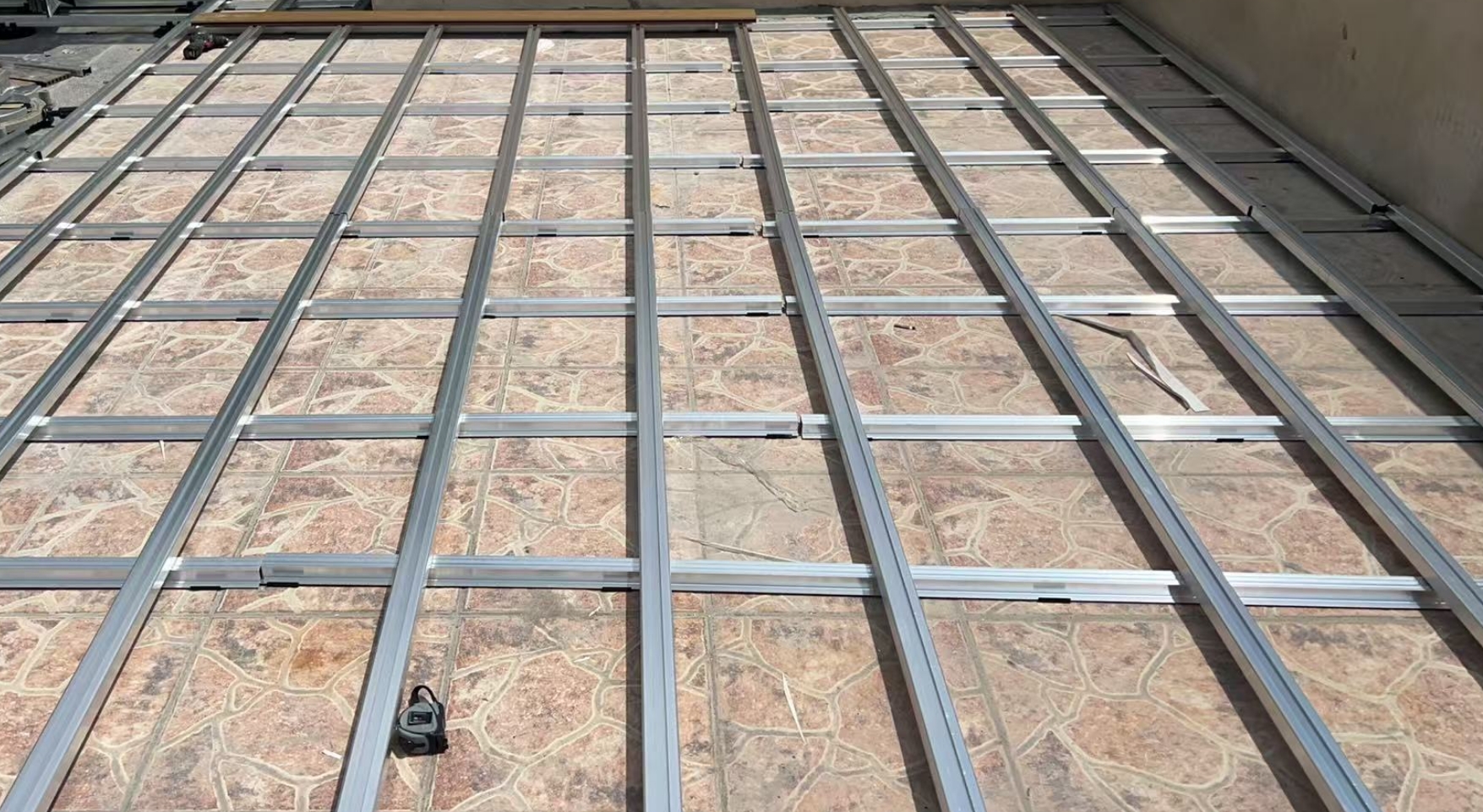Planning a composite deck? The secret to long-lasting beauty and safety is in a sturdy substructure base—not the deck boards themselves. In this guide, we dive deeply into what makes a perfect base, from ground treatment to material selection and installation techniques. With smart planning and quality materials, you’ll enjoy a gorgeous, maintenance-free deck for years. Let’s lay the groundwork—literally!

Every composite deck must sit upon a secondary frame—aka the deck base. This includes:
Joists that carry the deck boards.
Load-bearing beams which span between posts.
Auxiliary supports (noggins, blocking) that prevent twisting.
Underground posts or pedestals to elevate and level the frame.
⚙️ Key considerations:
Joist spacing (on-center, OC) is critical. Most composite systems require 16″ OC for straight decking and 12″ OC for diagonal layouts
Check your manufacturer’s instructions—spacing, framing height, and drainage allowances vary between brands.
The surface below your deck base determines its stability and longevity. Here are three common substrate options:
✅ Advantage: solid, stable, and strong
⚠️ Barrier: uneven stones? Use height-adjustable pedestals to level the subframe.
✅ Ideal smooth surface
⚠️ Risk: moisture wicking—lift the deck with pedestals and add a weed membrane to prevent seepage .
Remove vegetation, then level and compact gravel.
Drive posts into soil or gravel, supporting joist frame above.
Install a weed barrier membrane to prevent plant regrowth.
Regardless of substrate, always clear weeds and ensure good drainage to protect your deck.
Your choice of joist and beam materials depends on load, location, durability, and budget. Here are the top options:
| Material | Pros | Cons |
|---|---|---|
| Pressure-treated wood | Traditional, strong, widely available | Needs rot prevention; can warp |
| WPC composite | Maintenance-free, rot-resistant, eco-friendly | Slightly higher upfront cost |
| Aluminum alloy | Fire-resistant, ultra-durable, lightweight | Most expensive, but long lifespan |
Wood: reliable and familiar, but use pressure-treated lumber to minimize rot.
Composite WPC: requires zero painting or sealing; highly durable and sustainable—often made with recycled materials
Aluminum: ideal for harsh environments or buildings that demand fire-rated materials.
Subframe height depends on where your deck goes:
Use cut-to-height wood or composite posts.
Embed posts (or use metal brackets on concrete) and ensure level tops.
Use height-adjustable deck pedestals:
Speed up installation
Guarantee a level substructure
Prevent water pooling under joists
Pedestals are smart for rooftop decks or uneven patios—leveling is adjustable and they elevate your joists clear of moisture.
Even tiny subframe errors lead to big headaches. Learn from the pros:
Avoid laying joists directly on concrete or paving slabs—moisture can accelerate rot or mold doityourself.com+7
Always maintain proper joist spacing: 16″ OC for standard boards; 12″ if boards are laid diagonally
Verify all joists are level and in-plane. Run string lines and shim or sister joists as needed to prevent uneven decking
For top-tier guidance, explore Praysun's articles:
WPC safety essentials in “5 Must-Know Safety Features of WPC Deck”
Pro-grade design tips in “How to Install Composite Decking Like a Professional”
Common installation missteps tracked in “12 Installation Mistakes of Composite Flooring…”
These resources ensure you're building both smart and safe.
When it comes to composite decks, Praysun provides full-spectrum support—from foundation to finish. They can help you:
Design subframes to meet building codes
Select materials suited to your project's climate and load
Avoid installation pitfalls with expert guidance
📧 For personalized support, email praysunmaterials@gmail.com.
Building a composite deck isn’t just about stylish boards—what lies beneath is your foundation for happiness. Invest time and effort into the base:
Choose stable, well-drained substrate
Pick the right subframe material for your environment
Use adjustable posts or pedestals to ensure perfect leveling
Follow manufacturer spacing and detail guidelines
Do it right, and you’ll get a stunning, low-maintenance deck that lasts decades—with zero regrets.
praysunmaterials@gmail.com